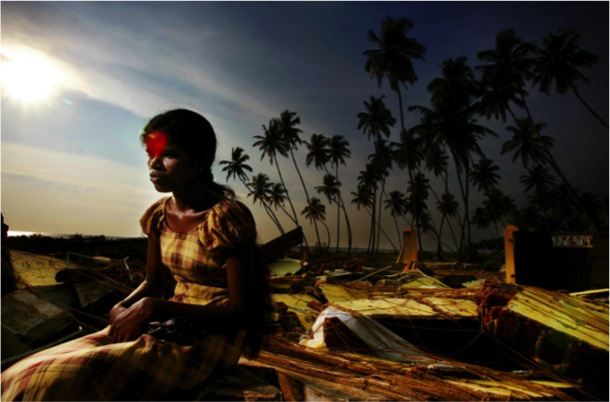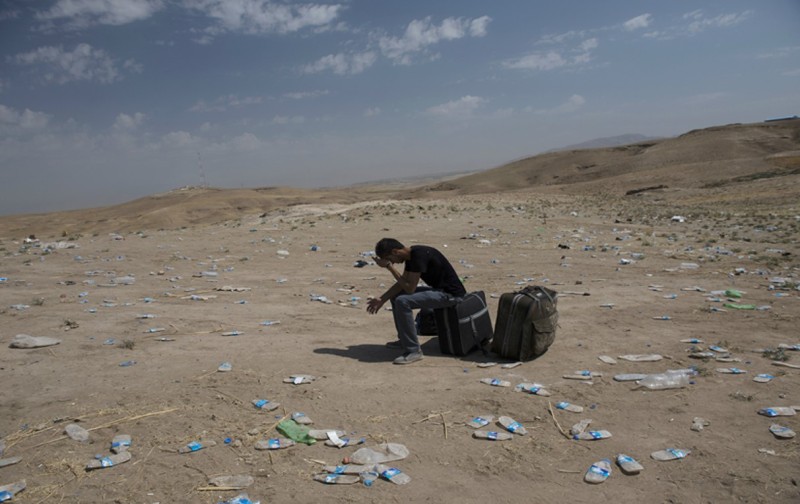
When I was searching for a journalistic photograph I came across the award-winning photo journalist called Brent Stirton, who is a photographer for Getty Images based in New York. I found a lot of his photographs captivating and they demonstrate issues that the world is facing. This particular image stood out to me because of the depth and the colours.
At first glance, the denotations from this image is that there is a person sat down on a lot of wood and rope, and there are palm trees behind her. From the persons feminine dress and fairly long hair that’s tried back you can tell it’s a woman, due to her conformity to the stereotype created by heterosexual ideologies. All of the wood and ropes that are piled up in a mess, are also shown in the iconic way that represents destruction. This destruction connotes natural disaster and from the sea in the photograph, it give connotations of tsunami’s. You can also tell the person is in a hot country due to the palm trees, the woman’s shiny skin that makes her look like she’s sweating and the sun that’s shining brightly. All of these signs have connotations of beaches and islands in ‘paradise’. In a way, this destruction in the photograph challenges dominant ideologies of hot countries because it juxtaposes with the imagery of a paradise beach.
Although the image is very colourful and bright they actually set a negative mood due to their connotations, when you think about them in depth. This is because there is a lot of blue and yellow in the photograph, which can often make most people think of happiness and relaxation. However blue also has connotations of isolation and sadness, which supports the preferred meaning for the image of the woman. Yellow also has connotations of sickness and hope which hugely sums up the context of the image, because she is a victim of a tsunami. The light from the sun also reflects in the image which causes there to be a red light on the woman’s head, which creates connotations of the women been in danger. This red also makes the audience focus on the woman, because naturally we are drawn to red colours in imagery which could mean that she is the clearly most important sign in the photograph.
There is also a contrast in the photograph because on the left side there is bright light and on the right side it’s quite dark. To me this connotes good and bad, through the idea that everything was fine at the start and now the woman is going through a dark time in her life. The positioning of the sun shining down on the woman may also suggest that there is hope and there are people out there who will look after her and help. The sun also has religious connotations of heaven, and the fact that the sun is shining on her it may suggest that God is looking after her.
You can also tell that the woman in the image isn’t very happy due to her facial expression (non verbal communication code), which is a signifier. The signified concept that is referred to this facial expression is misery and despair. The portrayal of how the woman is feeling is likely to be the dominant reading from the image, as it makes people sympathise for the victim. However, it’s also likely people will have negotiated and oppositional readings of the photograph.
Overall, I believe this photograph reinforces the dominant ideology of other countries needing our (first world countries) help due to the disasters they have to frequently face. This photograph could typically be used not only for a news story but also for an advertisement to raise money for a charity helping victims of the tsunami.
This photograph by Brent Stirton is actually of a victim of a tsunami. The information given about the photograph on his website says:









